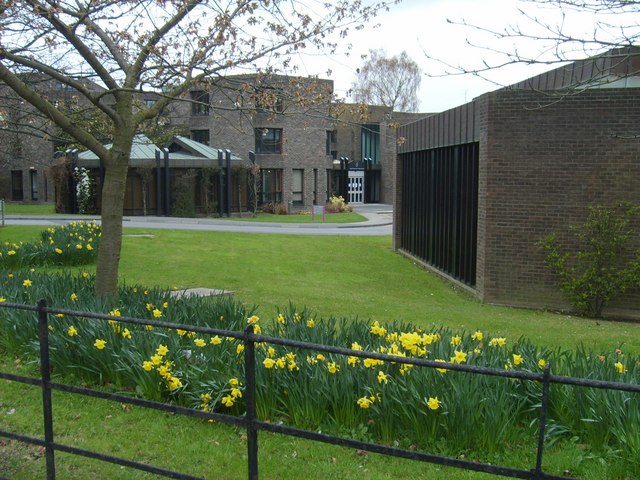
Trevelyan College
From 1963 onwards, there was an increase in the number of university places to be offered nationally, and consequently universities were required to expand their teaching and accommodation facilities. Durham’s contribution to this national expansion included the construction of three new colleges, two for men and one for women, which eventually became Collingwood, Van Mildert and Trevelyan. Trevelyan was named after Dr G. M. Trevelyan, University chancellor between 1950 and 1957.
Construction of Durham’s favourite hexagonal College began in October 1965 with a budget of just over £402,000, however the origin of the hexagonal plan is rather hazy, with rumours being passed down to each new generation of Freshers. It is commonly thought that the college reflects the castle in the modern idiom, and others suggest that it was inspired by the hexagonal block-work of the patio in the garden of Elvet Garth, the large house which neighbours the college, and was home to the vice-chancellor at the time the college was being planned. Whatever its origin, the hexagonal plan worked as the architect intended, grouping study bedrooms onto landings, rather than corridors, to foster a sense of community.
Although the first students had moved into Trevelyan in October 1967, the college was not officially opened until the Epiphany term, with the opening ceremony taking place on March 12th 1968. Amongst the first cohort of students was the daughter of the composer Malcolm Arnold, who was consequently approached to write a short suite to be played by students at the opening. He duly obliged, charging no fee, and completed the manuscript score in October 1967. This piece, which became ‘Trevelyan Suite – Op. 96’ and was scored for a double wind quintet with an additional flute and a cello, is in three movements, Palindrome, Nocturne, and Apotheosis, and a typical performance lasts between seven and eight minutes. It is believed that Trevelyan is the only Durham College to have a published musical suite written specifically for it, and the college has also become known over the years for its excellence in the performing arts, with a flourishing orchestra and stage musical society.
At the time of the college’s conception, it was still considered necessary to have single-sex accommodation for students, and thus when it first opened it was an all-female college. However, attitudes towards such matters began to shift rapidly soon after the college opened, and during the 1980s debate ensued as to whether the college should become mixed. Ultimately, it was decided that the college should admit boys as well as girls, and October 1990 was eventually set as the date for the first mixed intake. Despite its later change in policy, Trevelyan was the last purpose-built all-female college to be built for a British university.
Since the 1990s, the college has developed a reputation for sport, too, and contains a well-established boat club, with Trevelyan graduate Sophie Hosking going on to win gold in the Women’s Lightweight Double-Sculls at the London 2012 Olympic Games, and there now exists an unofficial gold post box on the cobbles of the college to commemorate the achievement. ‘Trevs’ will hope to add to such sporting successes in the future, with Angharad and Megan Phillips – who both played table tennis for Wales at this year’s Commonwealth games in Glasgow – amongst this year’s Freshers intake.
Away from sport, probably the most notable alumni of Trevelyan is Mo Mowlam, who studied Joint Honours in sociology and anthropology. She joined the Labour party while still an undergraduate, and went on to become an MP and then Secretary of State for Northern Ireland in 1997, after Tony Blair’s ‘New Labour’ government came to power. Mowlam was a crucial figure in the establishment of relative peace between the north and south of Ireland, and played a major role in the signing of the ‘Good Friday’ agreement in 1998. She is an immensely popular figure, and played a pivotal role in what is widely regarded as one of the Blair government’s greatest achievements.
This serves to further demonstrate that, despite being one of Durham’s younger and smaller colleges, ‘Trevs’ has a very interesting history, and much to be proud of.
